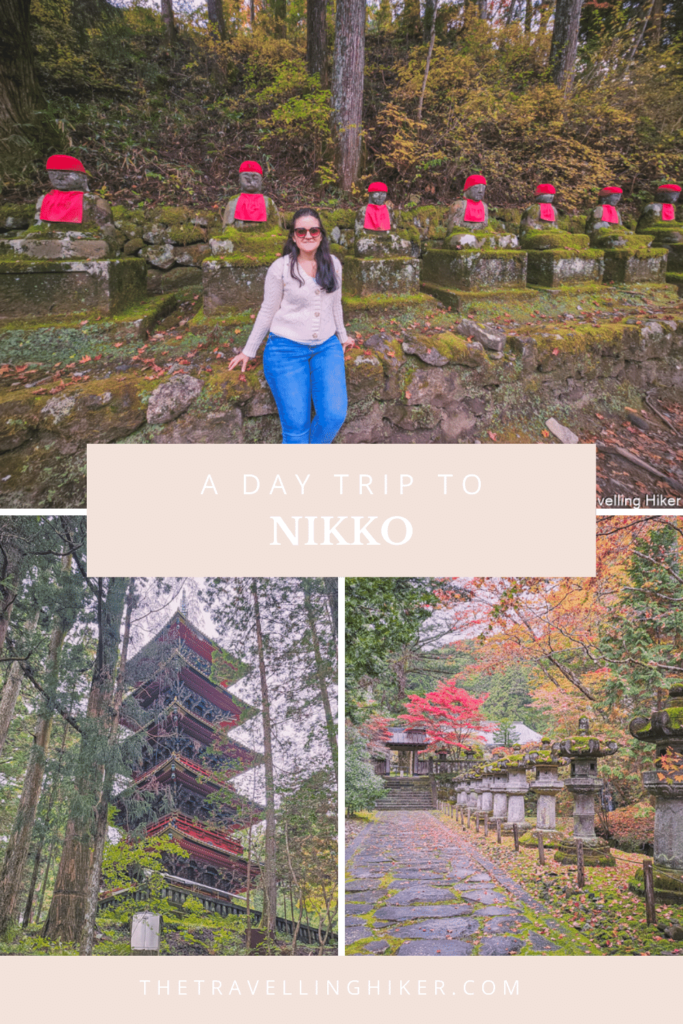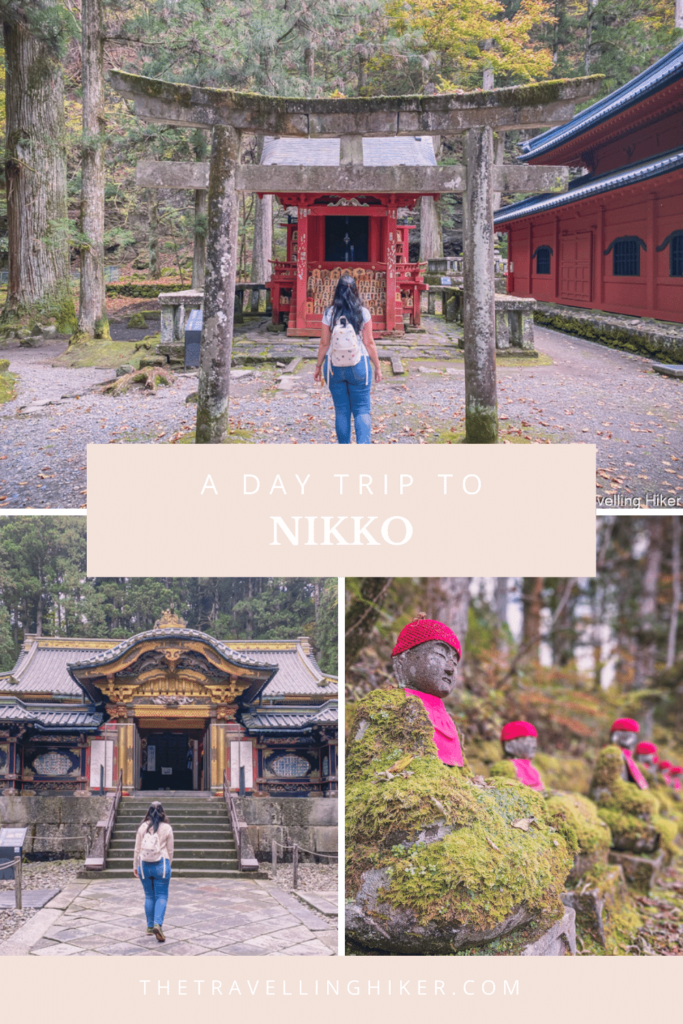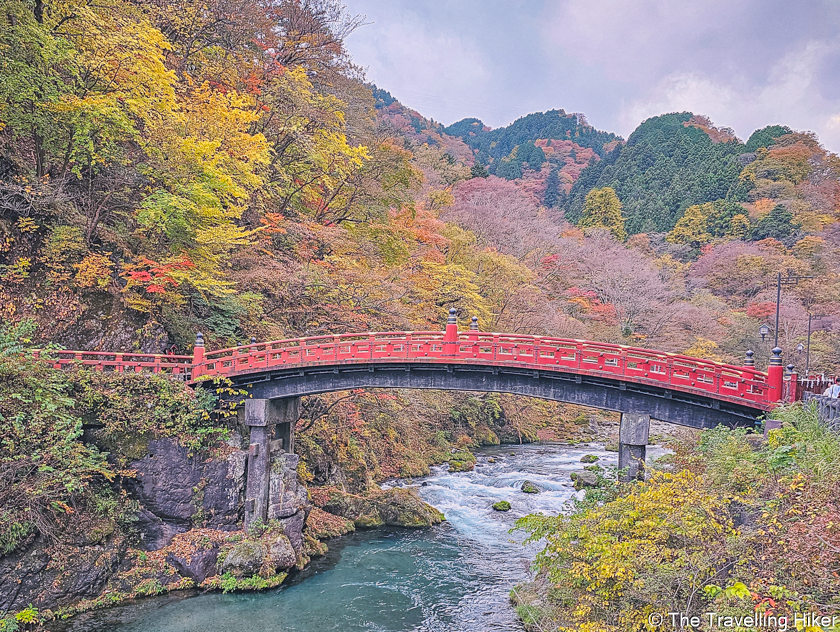Nikko is a fantastic idea for a day trip from Tokyo since it is located 2 hours away by train from Japan’s capital. However, for first-timers visiting Japan, it can feel a bit overwhelming to plan this day trip on your own. To help you, I have prepared this comprehensive blog to help you plan your day trip to Nikko from Tokyo. Because holidays are all about having the time of your life, not about being stressed.
When deciding which day trips we wanted to do in Japan, I was sure Nikko had to be one of them. Who doesn’t want to visit beautiful Japanese temples and shrines in the middle of nature? And let me tell, you Nikko did not disappoint. We got really lucky and even enjoyed the beautiful Momiji (autumn colors) which made the beauty of the scenery pop out even more.
TABLE OF CONTENTS
NIKKO
Nikko is a city located just two hours away from Tokyo that has become very popular among tourists in Japan. The reason is obvious, here not only will you be able to visit some of the most beautiful temples and shrines you have ever seen but also the nature of this area will leave you speechless.
With it being so popular, and if you’re planning a trip to Japan, you have most probably already heard something about Nikko. Here are some interesting facts about this city that you might not know.
- The temples and shrines of Nikko were declared a UNESCO World Heritage Site in 1999. This decision was based on the Shinto shrines of Toshogu and Futarasan-jinja and the Buddhist temple of Rinnoji. All of them are located in a breathtaking natural setting amongst the mountains.
- Speaking of the beautiful Toshogu shrine, without a doubt Nikko’s most popular site. Did you know that it has 121 lanterns with one-story pagodas? Out of this 121, 102 are made of stone, 17 are made of copper, and 2 of iron.
- Also in Toshogu, you will find the most extravagantly carved gate in Japan. This is Yomeimon Gate, at the shrine’s entrance with 508 carvings of dragons, flying horses and other mythical beasts.
- In Nikko you will also find the longest tree-lined avenue in the world, also known as the “Cedar Avenue of Nikko”. It has over 13.000 cryptomeria trees which were planted after Shogun Tokugawa Ieyasu’s death in the avenues that lead to his tomb.
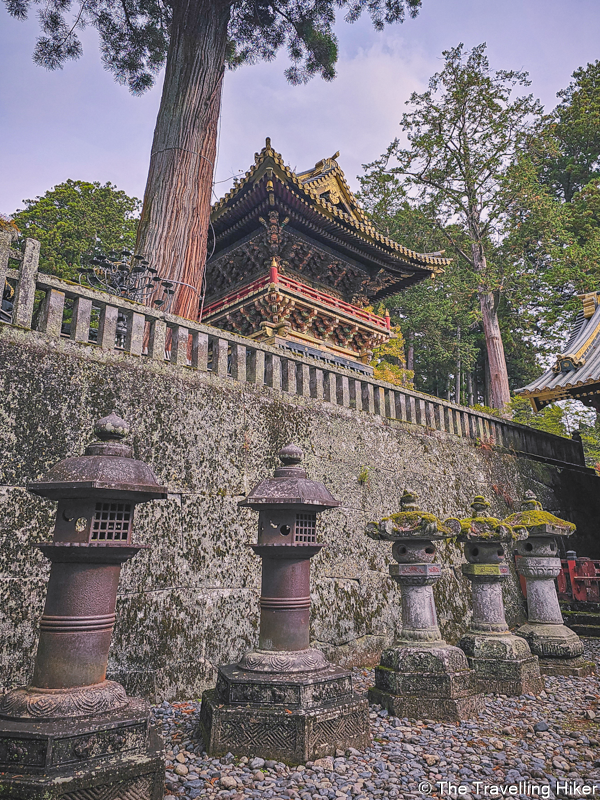
HOW TO REACH NIKKO FROM TOKYO
There are two ways of getting to Nikko from Tokyo, you can get there by using the Tobu Railway Line or by using the JR trains. Both of them will take you approximately two hours to get there, so your choice will mostly depend on whether you have an active JR Pass or not.
- If you have the JR Pass, the best way to reach Nikko is by taking a Shinkansen train from Tokyo or Ueno station until Utsonomiya station. There you will have to change to the local JR Nikko line until Nikko station. Each train ride will take you approximately 50 minutes and both of them are covered by the JR Pass.
- If you don’t have the JR Pass, you can take the limited express trains of the Tobu line that depart from Asakusa until Tobu-Nikko station. The upside of this option is that this is a direct train to Nikko with a reserved seat and in addition, Tobu-Nikko station is closer to the visiting area in Nikko.
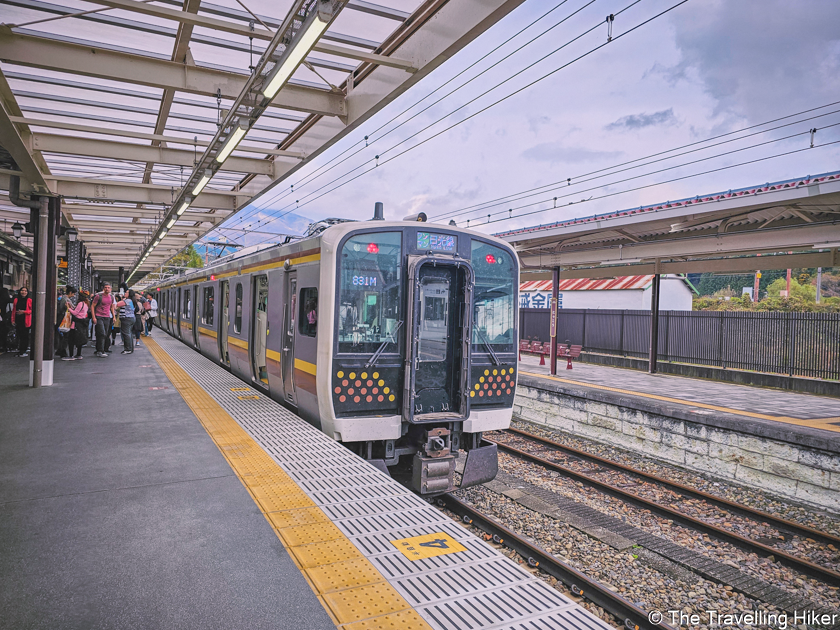
Moving around Nikko
Once you are in Nikko, the best way to move around is either on foot or by bus. If you choose to go on foot then keep in mind that it will take approximately 45 minutes to get from the train station to the temple and shrine area.
In my opinion, it is worth taking at least the bus until the entrance of the Toshogu Shrine and Rinnoji Temple. Once you’re there, you can visit the rest on foot. This is what we did and it was the best choice for us.
To use these buses, you can either pay with your IC Card (Suica, Pasmo, etc.) or you can get a Nikko World Heritage Pass (I will explain more about this in a moment) which will grant you unlimited use of the circular bus that moves around the UNESCO site. Since we only used the bus to get to and from the train station, we used directly our IC cards.
Nikko Pass
Depending on what you are planning to visit in Nikko or if you are staying here for more than one day, the Nikko Pass offered by Tobu Railway could be an interesting option for you. In addition, this pass offers discounts on the Tobu train from Asakusa so it is very interesting if you don’t have the JR Pass. There are two different passes:
- Nikko Pass World Heritage Area. This pass is the perfect option for those people who only want to visit the Unesco area in Nikko. As mentioned before, it also offers unlimited rides on the circular bus line that tours this area.
- Nikko Pass All Area: This pass is an interesting option if you’re planning on visiting other parts of Nikko like Lake Chuzenji or Okunikko area. This pass is valid for 4 days.
DAY TRIP TO NIKKO FROM TOKYO: BEST THINGS TO DO
Here is everything we did during our visit to Nikko. Just keep in mind that, like in all of my blog posts, these are what we did but they are not the only things you can do here. At the end of this blog, I will list some other options, in case you want to modify this itinerary or if you have some extra time in the area.
Toshogu Shrine
As soon as we got out of the train station in Nikko, we went directly to visit Toshogu Shrine. This is Nikko’s most popular site and it gets really crowded so we wanted to visit it as soon as possible. We certainly were not alone there, but by the time we were leaving this shrine, it was 5 times more crowded than when we arrived.
Toshogu Shrine will amaze you in every possible way. Not only it is located in a beautiful natural site, it has many beautiful and colorful carvings and many lanterns. It is the home of the mausoleum of Ieyasu Tokugawa, the first Tokugawa shogun.
The most important things not to miss in Toshogu are:
- The five-story pagoda near its entrance.
- The three sacred storehouses with the carvings of “sozonozo elephants” (imaginary elephants) or the see no evil, hear no evil, speak no evil monkeys.
- Yomeimon Gate with its 508 carvings of dragons, flying horses, and other mythical beasts.
- The Bell Tower and Drum Tower.
- The Chinese Gate (Karamon Gate) with an ascending and descending dragon on each side of the gate.
- The Sleeping Cat carving that protects the entrance to the grave of Ieyasu Tokugawa.
- The inner shrine pagoda, under which is the grave of the shogun.
- The wishing granting cedar tree.
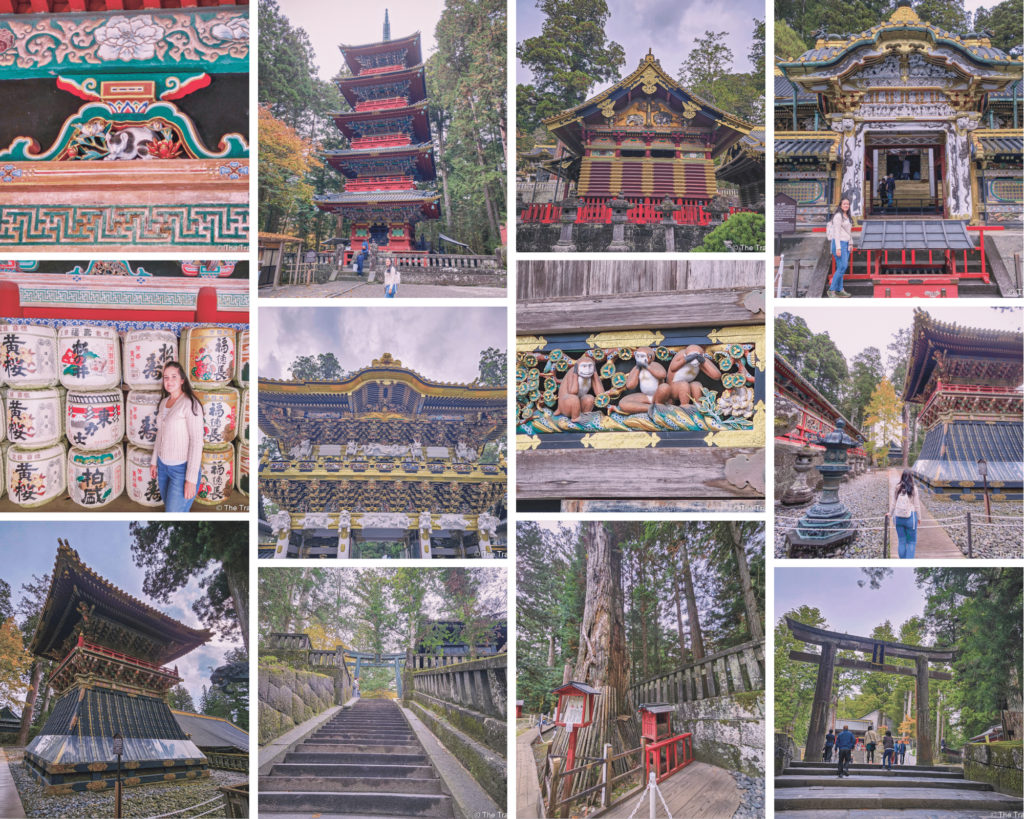
Taiyuin Temple
Our next stop was Taiyuin Temple, where you can find the Mausoleum of Iemitsu Tokugawa, the grandchild of Ieyasu Tokugawa, and the third Tokugawa Shogun.
The main sites not to miss in Taiyuin are:
- Niomon Gate, the entry gate to the temple.
- Omizuya fountain, where you can cleanse your hands and mouth before entering the temple. This is not mandatory for tourists.
- Nitemon Gate, with two Buddhist deities guarding it.
- Kokamon Gate, which gives entrance to the mausoleum.
This temple, even though it is less spectacular than Toshogu Shrine, was our favorite since it was not as crowded as the other one.
Good to know: It is possible to buy a combined ticket to visit the Taiyuin Temple and Rinnoji Temple Big Hall for 900 yen.
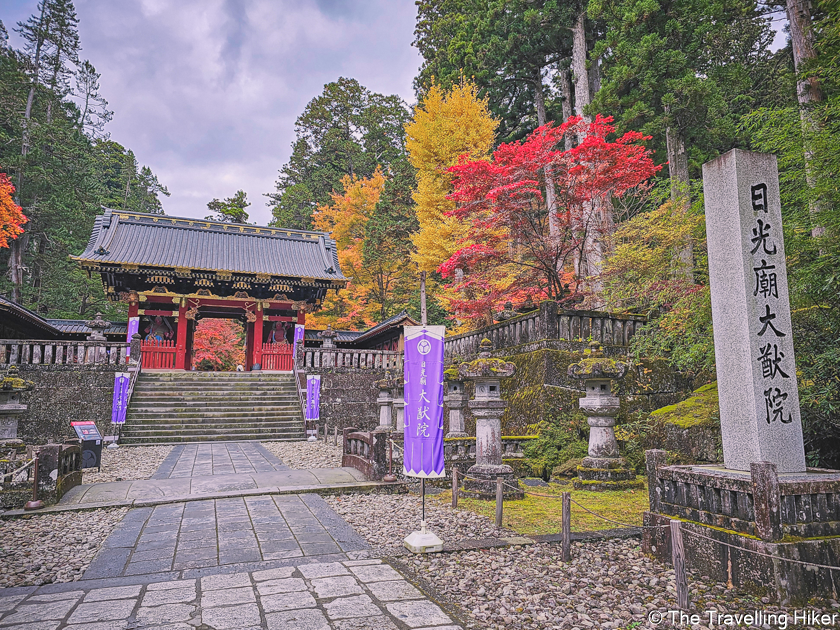
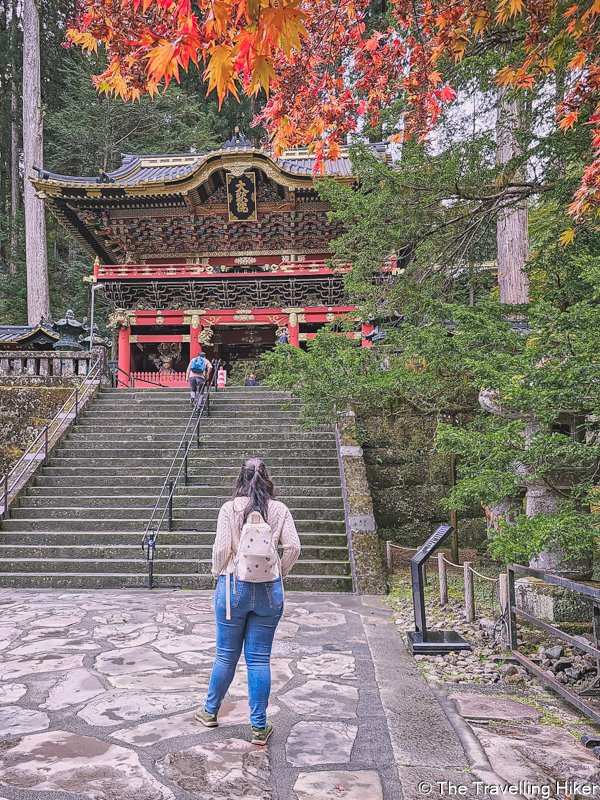

Shiraito Falls
From Taiyuin, we started a short hike up the mountain to see Shiraito Falls. This walk was very nice and peaceful since we were there completely alone. The walk was not very challenging and allowed us to enjoy some peace and quite after the busy Toshogu Shrine.
Along the way to the falls, we encountered Gyojado, Hall of the Ascetic, which is believed to be one of the first worship halls in Nikko.
Shiraito Falls are not the most impressive waterfalls you can see in Japan, but the short hike to reach them is quite charming. On the way up, we walked along beautiful trees with pretty autumn colors, and on the way back, we encountered small little temples to enjoy alone.
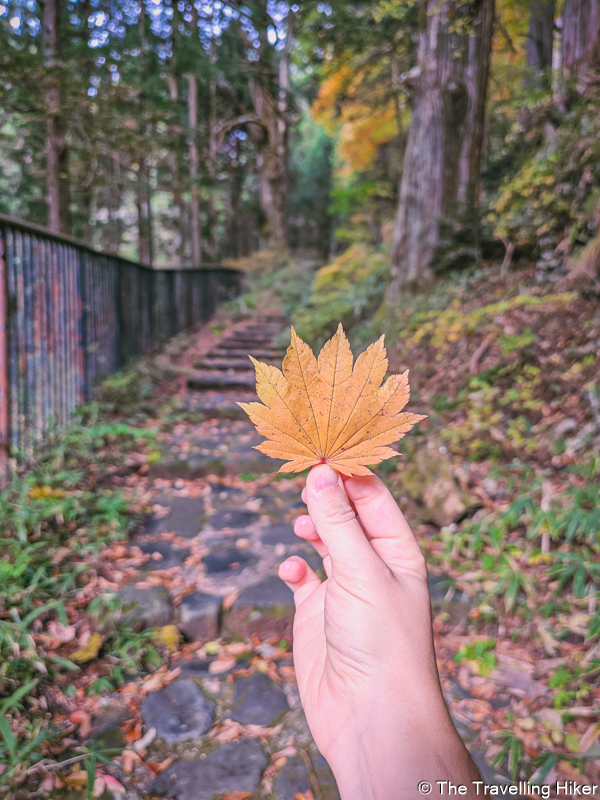
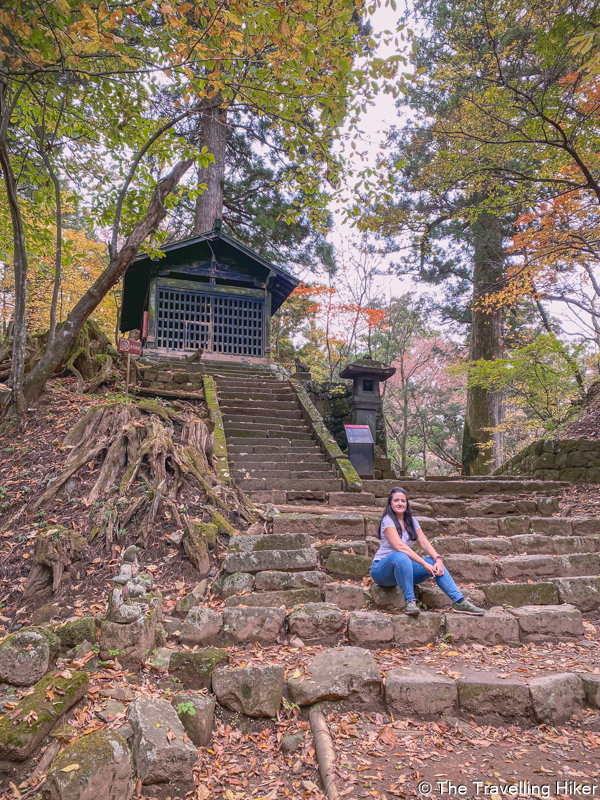
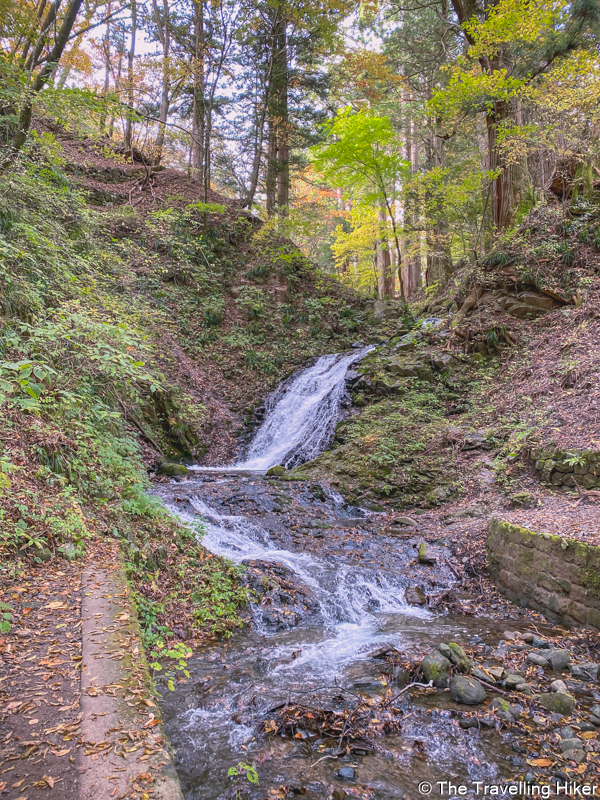
On the way down, we also encountered a few small temples and shrines with a lot of charm such as Kitano Shrine and Kaizando Hall., where Shodo Shonin, the founder of Rinnoji Temple, is enshrined.
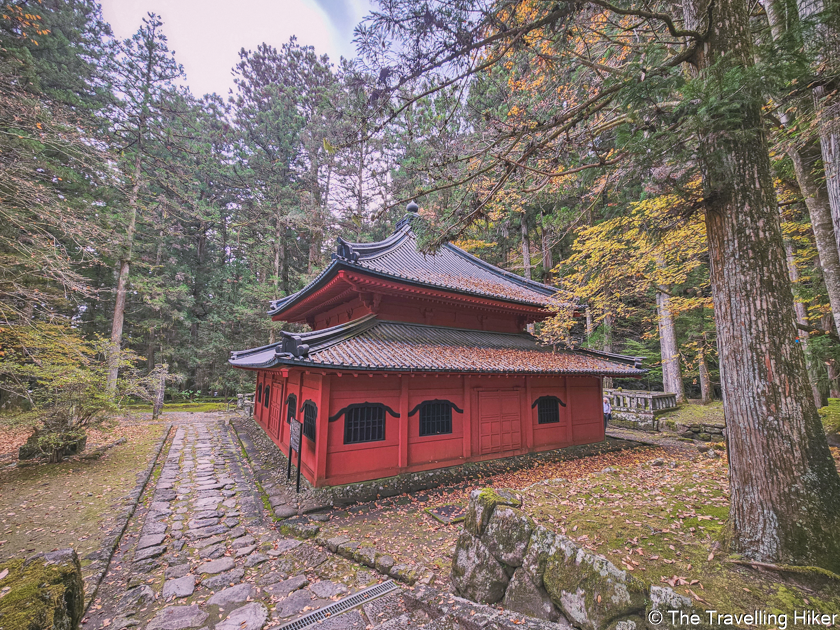
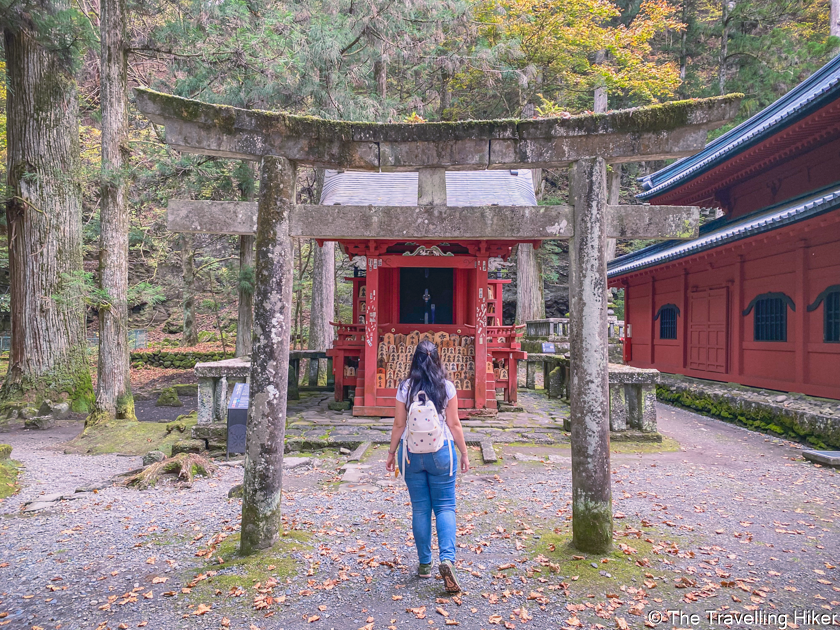
Rinnoji Temple
After our little hike, we were back in the world heritage site part of Nikko to visit Rinnoji Temple, which is Nikko’s most important temple. Rinnoji was founded by Shodo Shonin, an ascetic Buddhist monk who introduced Buddhism in Nikko in the 8th century.
The main building of Rinnoji Temple is called the Sanbutsudo and inside it, you can find large, gold-lacquered wooden statues of three deities. These are Amida (the Buddha of light), Senju-Kannon (“Kannon with a thousand arms”), and Bato-Kannon (“Kannonw with a horse head”).
Unfortunately, it was not possible to take photos inside the Sanbutsudo but I have to admit these 3 statues were really impressive. Also, the gardens around Rinnoji Temple were very pretty with the Momiji in full swing.
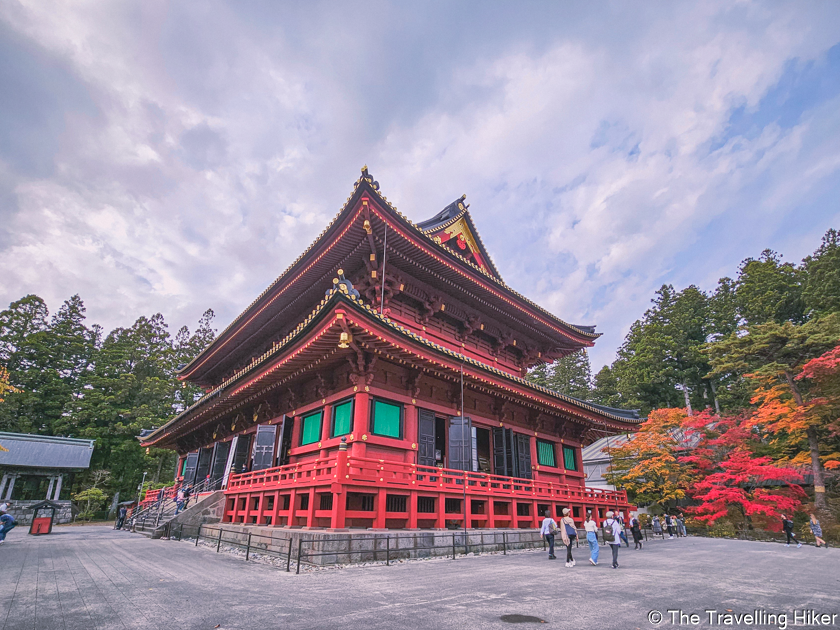
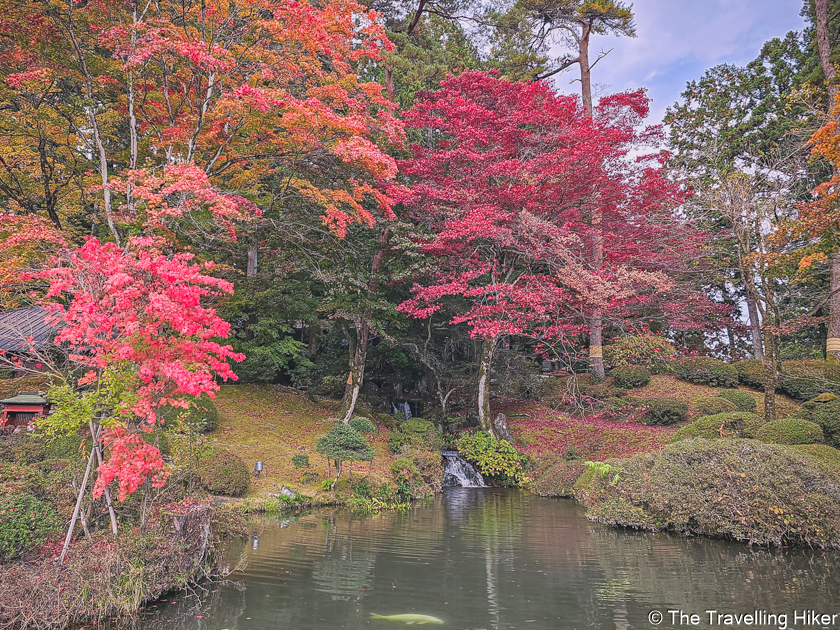
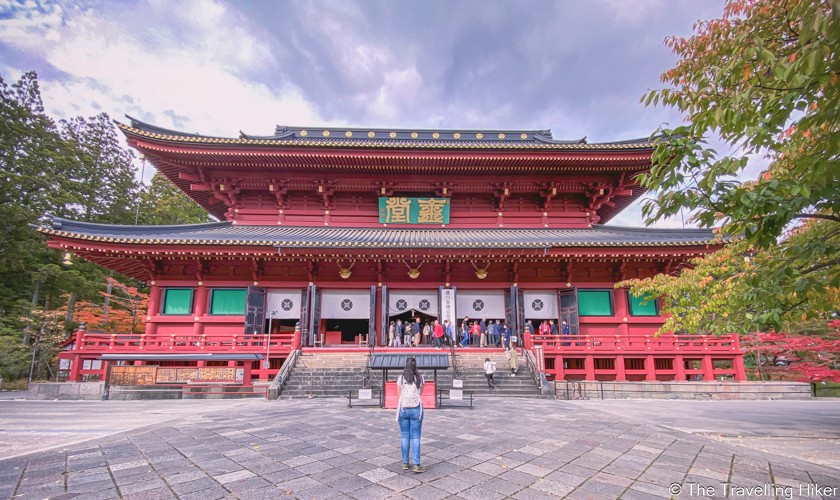
Trying out some local sweets
By this time it was time to get something to eat and rest a little bit. When traveling, we always try to have a light lunch to not waste a lot of time while visiting and then have a bigger dinner in the evening.
Not far from Toshogu Shrine and Rinnoji, we found Karimon, a small cafe selling local pastries and green tea, and decided to try them. We each got a Karimon, their signature pastry, and a Dorayaki. They were both mouth-watering and could not decide which one I liked better.
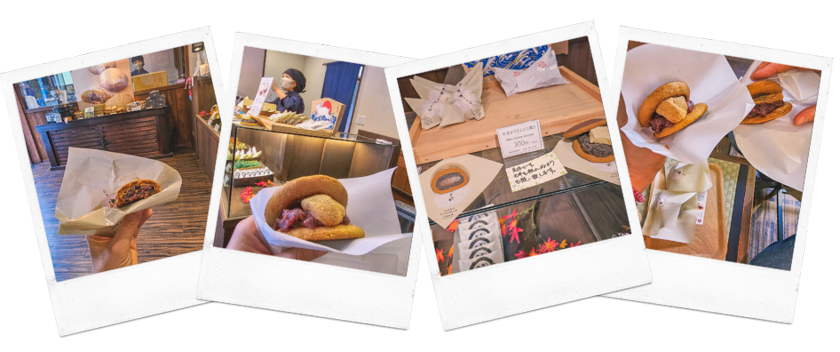
Kanmangafuchi Abyss
Once we had eaten something, we walked for approximately 20 minutes until our next stop, Kanmangafuchi Abyss. This is a small gorge (only a few hundred meters long) along the river Daywa with many Jizo statues. In total, there are supposed to be 71 Jizo statues along the gorge. However, there is a myth that says you can never count the same number of statues twice as they tend to disappear. This is why, they are also called Bake Jizo (“ghost Jizo”).
This was one of the highlights of our visit to Nikko. We were almost alone in the “abyss” and were able to explore it while taking our time here. The whole atmosphere here was very relaxing. The many Jizo statues are decorated with knitted hats and bibs. You can walk next to them, hear the Daywa River flowing next to you and there are small waterfalls next to the river.
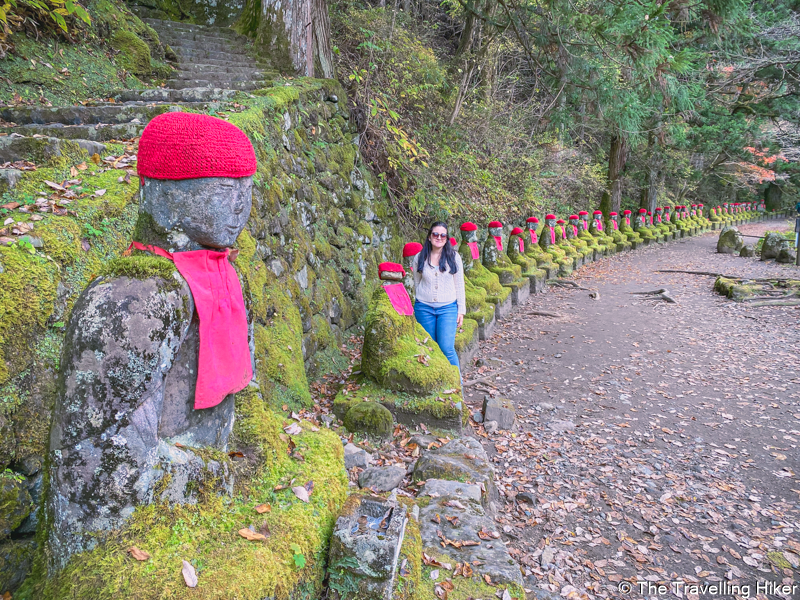
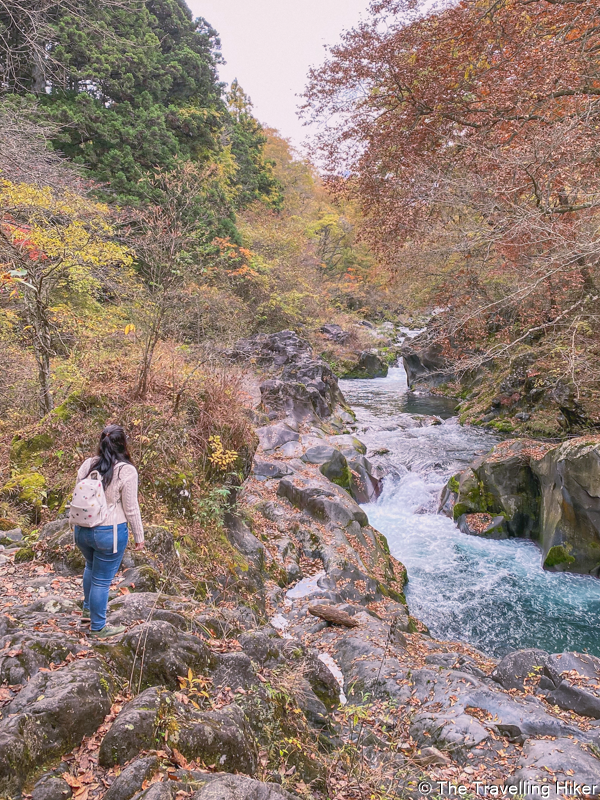

Shinkyo Bridge
From Kanmangafuchi Abyss, we walked to the most famous bridge in Nikko, Shinkyo Bridge. This bridge was built in 1636 and it is technically part of Futarasan Shrine. It is possible to cross the bridge for a small fee. However, in my opinion, it is not worth it as the pretty view is from the parallel bridge where you can see Shinkyo Bridge.
Right next to it, you can find the statue of a monk who served in the Tendai cult and was Ieyasu Tokugawa’s right hand.
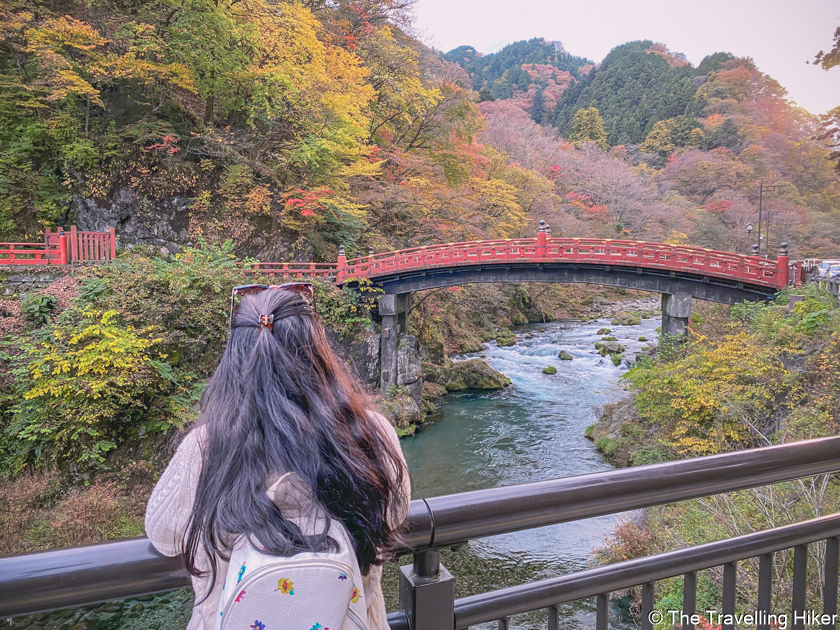
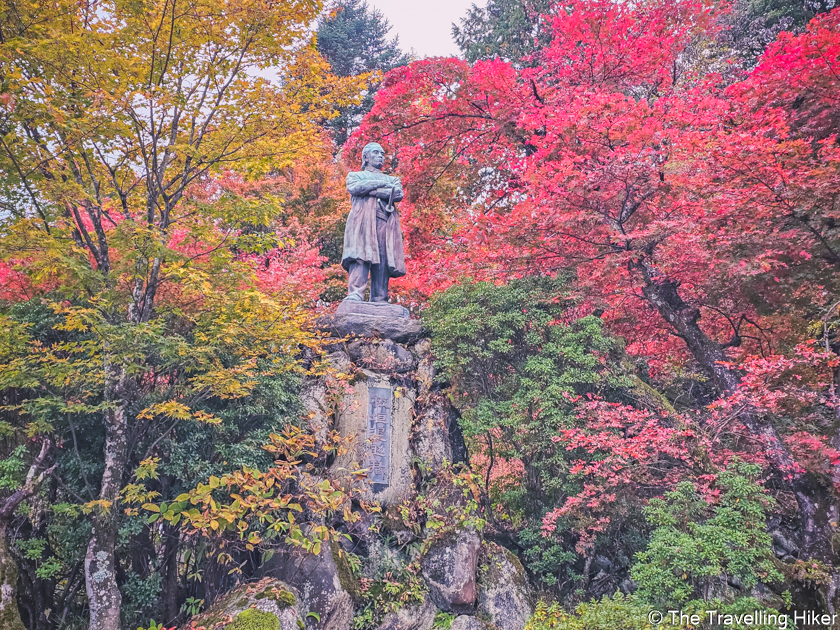
Nikko's Old City Hall
After Shinkyo Bridge, we intended to take a 15-minute bus ride to Kirifuri Falls. However, even though it was still quite early, there were no more buses for the day to take us there.
Instead, we decided to walk back to the station, check out some shops on our way there, and find a nice place to eat. On our walk, we stumbled upon Nikko’s Former City Hall. It is not possible to visit inside it, but it was still pretty to admire from the outside.
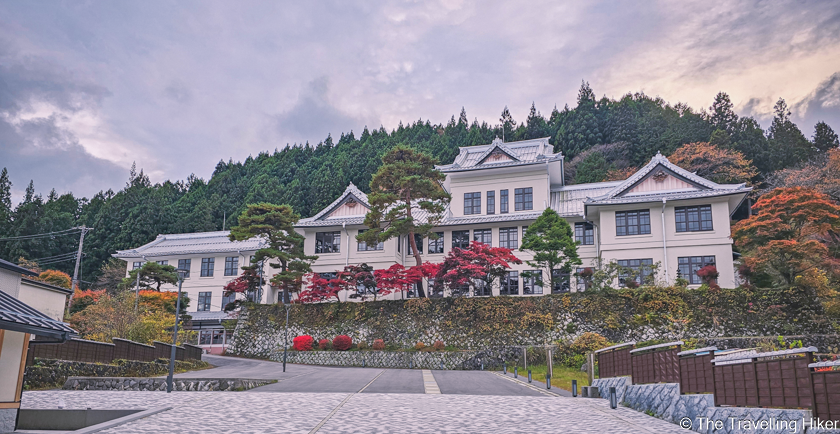
Dinner in Nikko
We finished our day in Nikko with some delicious noodles in Azuma restaurant. The noodles were delicious (and also kawaii with some monkey decorations). They helped us warm up and got us ready for the ride back to Tokyo.
The ride back to Tokyo (or at least to Utsonomiya Station) was not the most comfortable since the train was full and we had to stand on a train for 50 minutes. This was not ideal as we were already quite tired from the day. In addition, at Utsonomiya, the first Shinkansen could not get a reserved seat so we had to wait an extra 30 minutes for the next one. We were so tired that we didn’t want to risk another 1-hour train ride standing up.
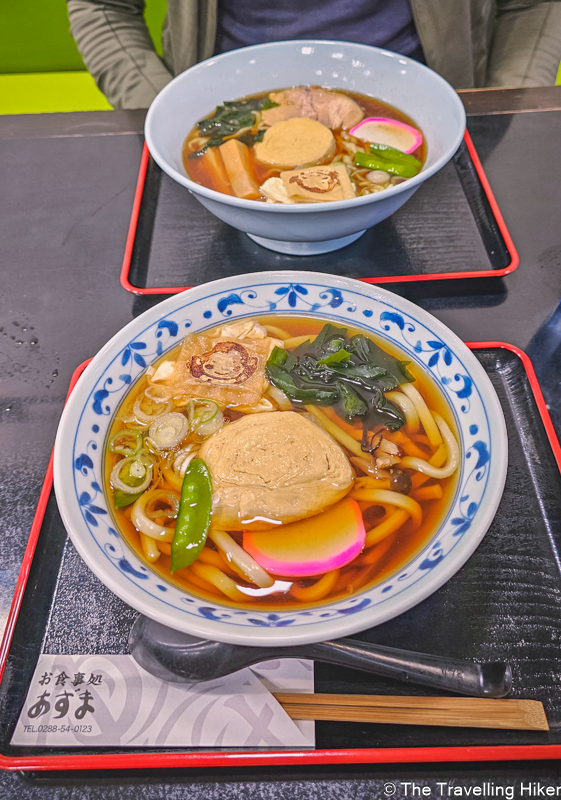
OTHER THINGS TO DO IN NIKKO
If you have some extra time in Nikko, there are plenty of other things to do here. Here is a summary of the many things that I would have liked to try if I had stayed in the area for a couple of days.
Nikko Town
- Tamozawa Imperial Villa. This villa is a blend of Edo-period and modern Meiji architecture. In addition, its beautiful Japanese garden is a must-see place during autumn.
- Nikko Botanical Garden.
- Kirifuri Waterfall. This is an impressive 75-meter-high waterfall a little bit north of the Nikko temple area. Its name translates into English as “falling mist” due to the mist created by the water when crashing into the rocks.
- Futarasan Jinja Shrine. This shrine was actually in our planning but for some reason, we walked passed by its entrance and didn’t notice it was there. By the time I realized, we had skipped it we were already quite far from it and it was not worth going back.
Nikko National Park
- Lake Chuzenji. Visit the beautiful Lake Chuzenji and hike around it. The complete loop around the lake is 23km long. If you want to complete it, you will have to foresee a full day for it. However, you can just do a part of it and later visit the Lake Chuzenji observation deck to admire it from above.
- Kegon Waterfall. This is a 100-meter tall waterfall, very popular during Momiji season as well.
- Ryuzu Waterfall.
ACCOMMODATION IN NIKKO
If you plan to visit Nikko National Park and want to enjoy the nature around Nikko as much as possible, you will have to spend here at least one night.
The options in Nikko are endless but here are some recommendations I would choose for myself.
- Nikko Hoshino Yado.
- Lake Side Nikko Hotel: Beautiful hotel located next to Lake Chuzenji
MAP WITH ALL LOCATIONS
And that’s it for this week’s blog. I hope you liked it and found it useful. Let me know what you think in the comments!
DISCLAIMER: Did you know? This blog uses affiliate partnerships. When you click and book or make a purchase through one of my blog posts, I may receive a small commission (at no extra cost to you). Thank you for supporting The Travelling Hiker!
OTHER ARTICLES ABOUT JAPAN
- PLAN A TRIP TO JAPAN ON YOUR OWN
- THE BEST GUIDE TO TOKYO’S NEIGHBORHOODS
- THINGS TO DO IN ASAKUSA
- THINGS TO DO IN CHIYODA
- BEST THINGS TO DO IN ODAIBA ISLAND
- 3 AMAZING DAY TRIPS FROM TOKYO
- HOW TO SPEND A DAY IN HAKONE: BEST THINGS TO DO
- A DAY TRIP TO NIKKO FROM TOKYO
- A DAY TRIP TO KAMAKURA FROM TOKYO
- THE 11 BEST THINGS TO DO IN TAKAYAMA
- THE PERFECT DAY TRIP TO SHIRAKAWA-GO
- THE ULTIMATE HIROSHIMA TRAVEL GUIDE
- MIYAJIMA ISLAND – THE BEST THINGS TO DO
- A DAY TRIP TO HIMEJI AND KOBE
- 3 DAYS IN KYOTO ITINERARY
- A DAY TRIP TO NARA AND OSAKA
- 4 DAYS IN TOKYO – THE BEST ITINERARY
- THE BEST THINGS TO DO IN SHIBUYA, TOKYO
- THE BEST THINGS TO DO IN MINATO, TOKYO
- THE BEST THINGS TO DO IN SHINJUKU, TOKYO
- 20 DAYS IN JAPAN – ITINERARY FOR FIRST TIME VISITORS
ENJOYED THIS GUIDE? PIN IT FOR LATER!
